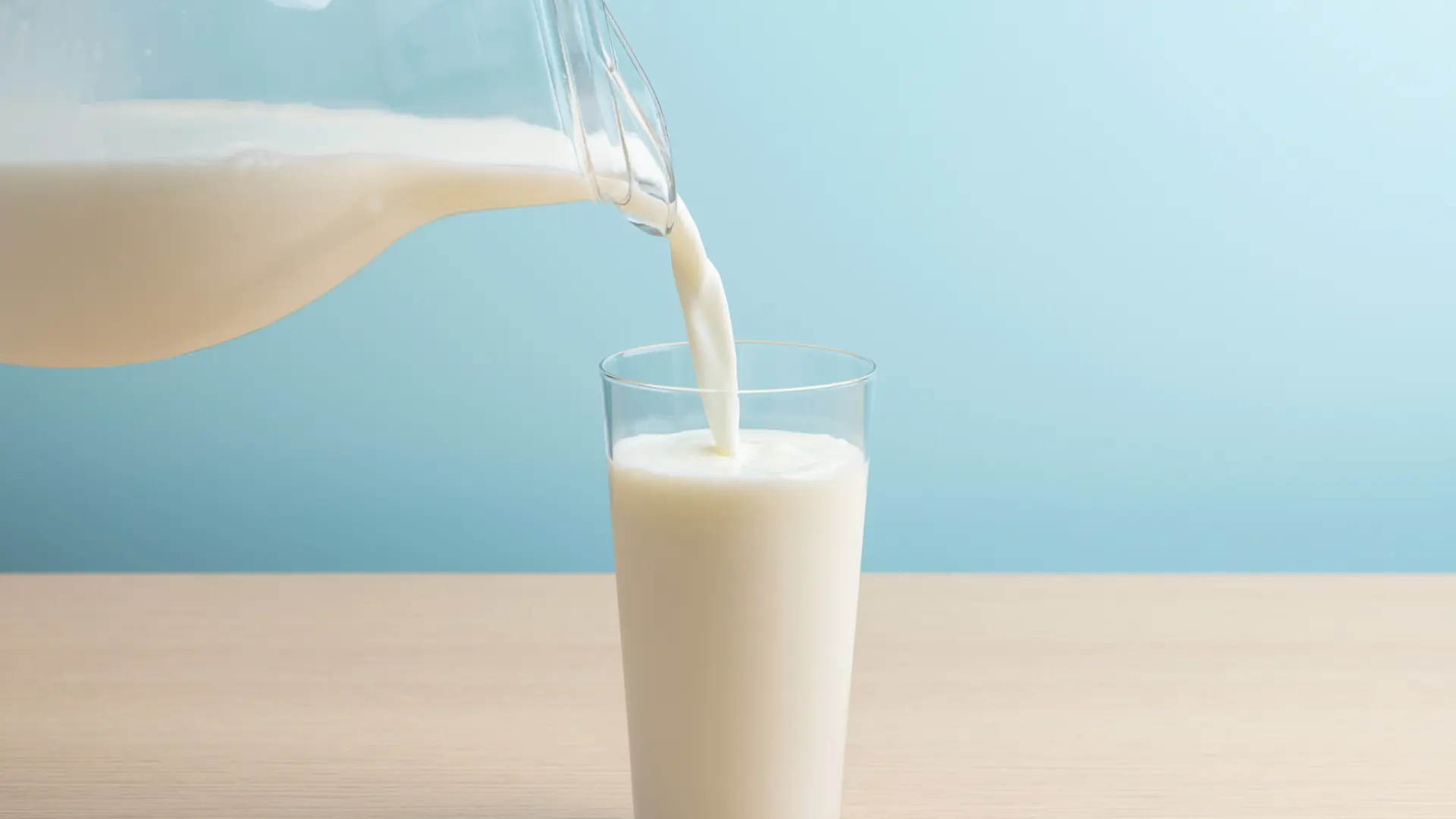
The Ultimate Guide to Japanese Milk: Why It’s So Delicious and How to Enjoy It
Milk is enjoyed in almost every country around the world, but Japanese milk has quietly become a topic of conversation among international visitors for its “delicious” taste.
Many have praised it as “rich,” “fresh,” “consistently good wherever you buy it,” and “reasonably priced,” which has piqued the curiosity of travelers.
This article introduces the reasons why Japanese milk tastes so good, how to choose the right kind, famous national brands, local varieties, and the unique ways Japanese people enjoy milk.
By the end, you’ll be ready to have the ultimate “milk experience” during your trip to Japan.
The Characteristics of Japanese Milk and the Reasons for Its Deliciousness
“Fresh and rich, yet with a clean aftertaste.”
Where does this distinctive taste of Japanese milk come from?
Take a closer look at the carton label that reads Ingredients: 100% raw milk.
Raw milk refers to milk that has been freshly collected from cows. When nothing is added or removed and it is only pasteurized, it is officially labeled as “milk.”
In other words, Japanese milk preserves nature’s blessings in their purest form—this is the very foundation of its delicious flavor.
To deliver this “fresh taste” to consumers, dairy farmers, milk tanker trucks that collect raw milk daily, cooler stations, dairy manufacturers that process the milk into products, and distribution channels that ensure safe delivery all work tirelessly at every stage of the process.
A Strict Shelf Life: About 1–2 Weeks from Production, and About 2 Days After Opening
The rich flavor that comes from fresh milk also means that it is packed with nutrients, which in turn makes it prone to bacterial growth. To address this, every player in the production and distribution process enforces strict hygiene controls, such as quality inspections and advanced manufacturing facilities.
As a result, the typical shelf life of chilled milk in Japan is inevitably short: about 1–2 weeks from the production date, and around 2 days once the carton is opened.
However, milk processed with different heat-treatment methods and packaging—known as “long-life milk”—can keep for about 2–4 months unrefrigerated if unopened.

From Hokkaido in the North to Kyushu in the South, Dairy Farms Are Found Across Japan
Japan’s diverse climate means that every prefecture has its own dairy farms.
The flavor of raw milk varies depending on the feed given to the cows, the natural environment of the farm, and seasonal climate changes.
To ensure that “fresh taste” is delivered, milk is often processed in factories located close to the farms where it was produced. Regardless of the region, however, the commitment to safety and reliability remains the same. This is why consumers across Japan can enjoy fresh, rich, yet clean-tasting milk wherever they go.
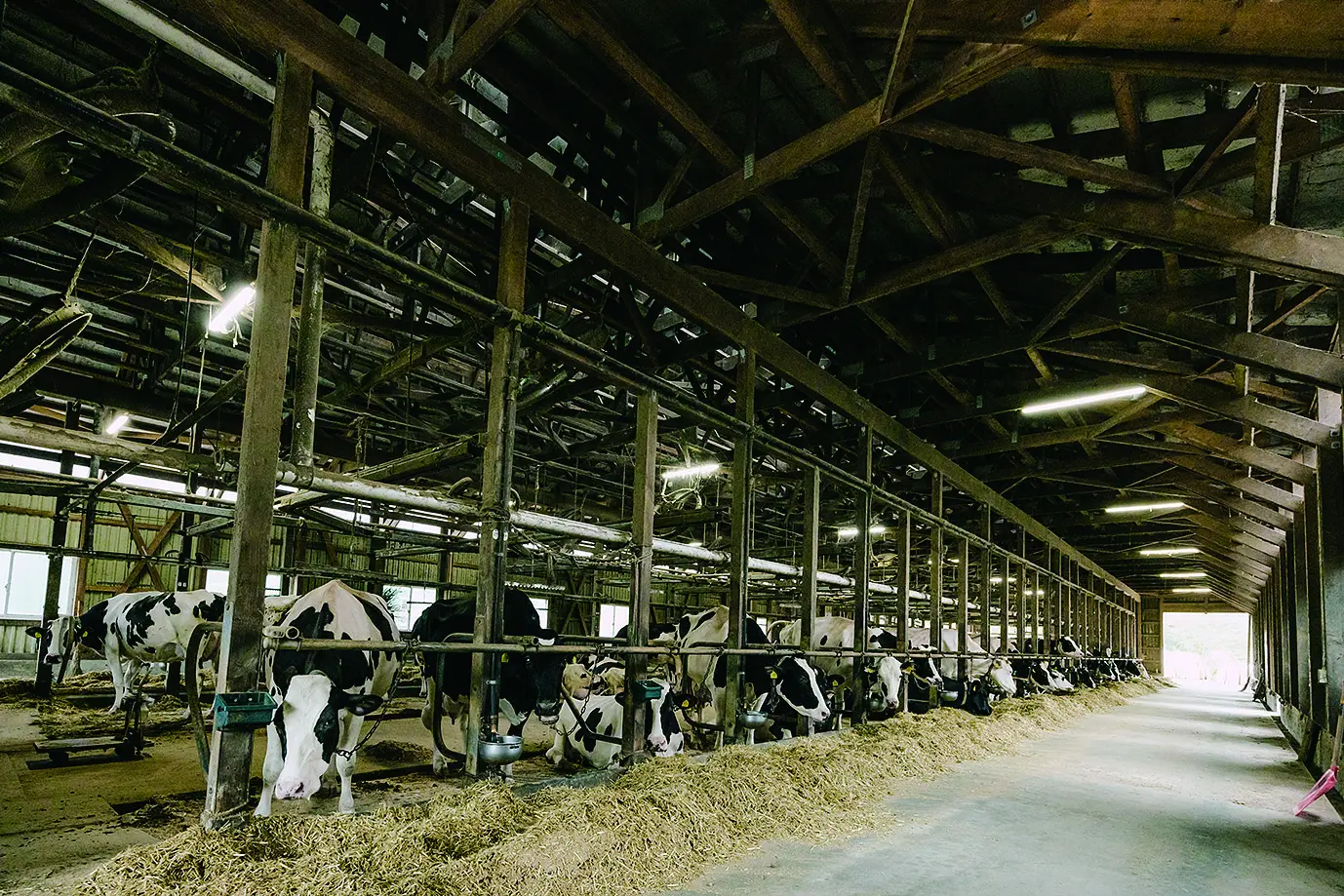
Where Can You Buy Milk in Japan?
In Japan, milk is readily available nationwide at supermarkets and convenience stores, offering a wide variety of options. Department store food sections and upscale supermarkets such as Seijo Ishii carry an especially extensive selection.
The most common carton sizes are 200 ml, 500 ml, and 1 liter, allowing consumers to choose according to their needs. Prices vary depending on the store and region, but generally fall between 150 and 350 yen.
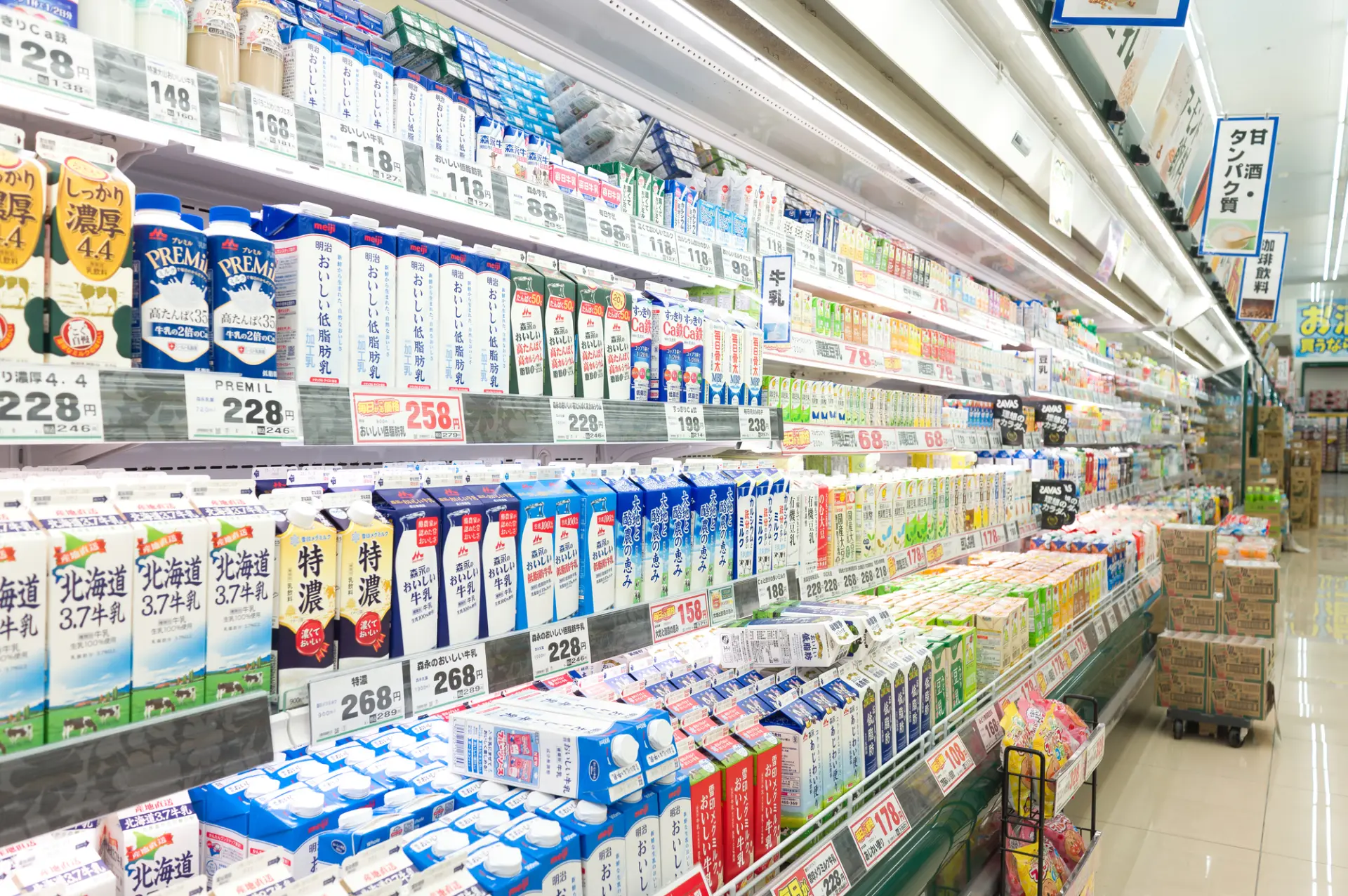
How to Choose Milk in Japan: What to Know Before Buying
Although often referred to simply as “milk,” there are actually many different types, and it can be difficult to decide which one to buy. While it’s fine to choose based on packaging or brand, cartons display a variety of information that can help you select the best option for your preference and situation.
1. Look for the Category Name and Choose “Milk”
The dairy section in stores does not exclusively carry milk. That’s why the first step is to check the category name printed on the package.
“Milk” is defined as a product made from 100% raw milk with no added water or additives. By regulation, it must contain at least 3.0% milk fat and 8.0% or more non-fat milk solids. This is an important detail to check.
For reference, milk that is still 100% raw milk but has had certain components (such as water, milk fat, or minerals) partially removed is labeled as “adjusted milk.” For this category, only the non-fat milk solids requirement of 8.0% or more is mandated.
Products with even lower fat content are categorized as “low-fat milk” or “non-fat milk.”
Meanwhile, “processed milk” refers to products made by adding dairy ingredients such as skim milk powder, butter, cheese, or cream to raw milk, adjusting the flavor and nutritional profile. Processed milk may not contain additives such as water or sugar, and must also meet the requirement of at least 8.0% non-fat milk solids.
Another category, “milk beverages,” uses milk or dairy products as the base but also includes other components such as vitamins, minerals, or fruit juice. Examples include coffee milk and strawberry milk. Milk beverages must contain at least 3.0% milk solids, and they often include added nutrients or flavors to meet specific consumer needs.
With so many different cartons on the shelves, it’s easy to feel overwhelmed, but the first step is to choose a product clearly labeled “milk.”
As a side note, if you notice a small dent on the top of a carton, it indicates that the product is “milk” in a container of 500 ml or larger.
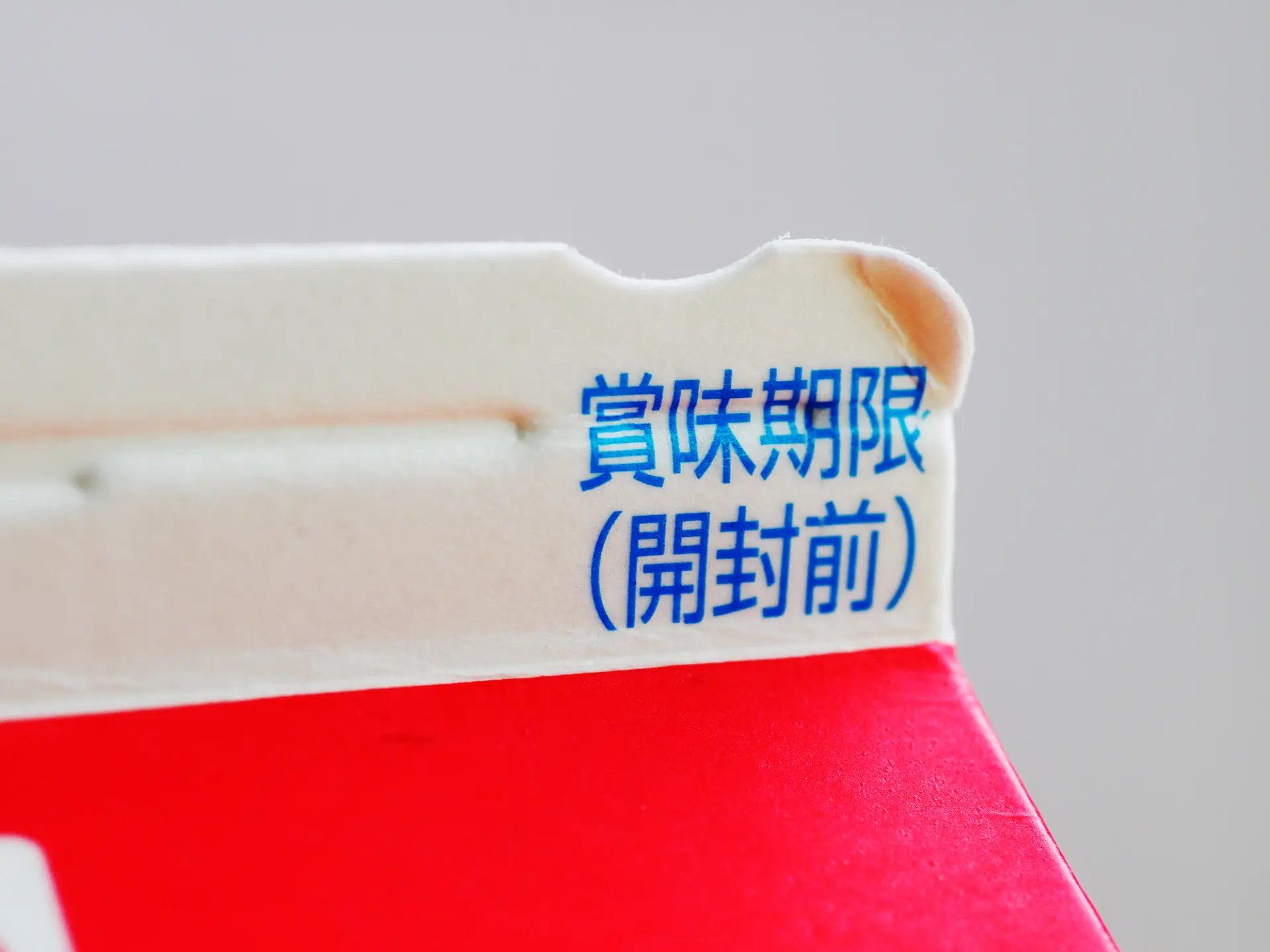
2. Choose Based on the Pasteurization Method
Over 90% of the milk sold in Japan is treated using the Ultra-High Temperature (UHT) method, in which raw milk is heated at 120–150°C for 2–3 seconds.
However, other methods also exist, such as the Low-Temperature Long-Time (LTLT) method, in which milk is heated at 63–65°C for 30 minutes. The pasteurization method has a significant effect on the flavor, particularly the aroma.
Be sure to check the carton label, which usually states the exact temperature and duration of pasteurization.
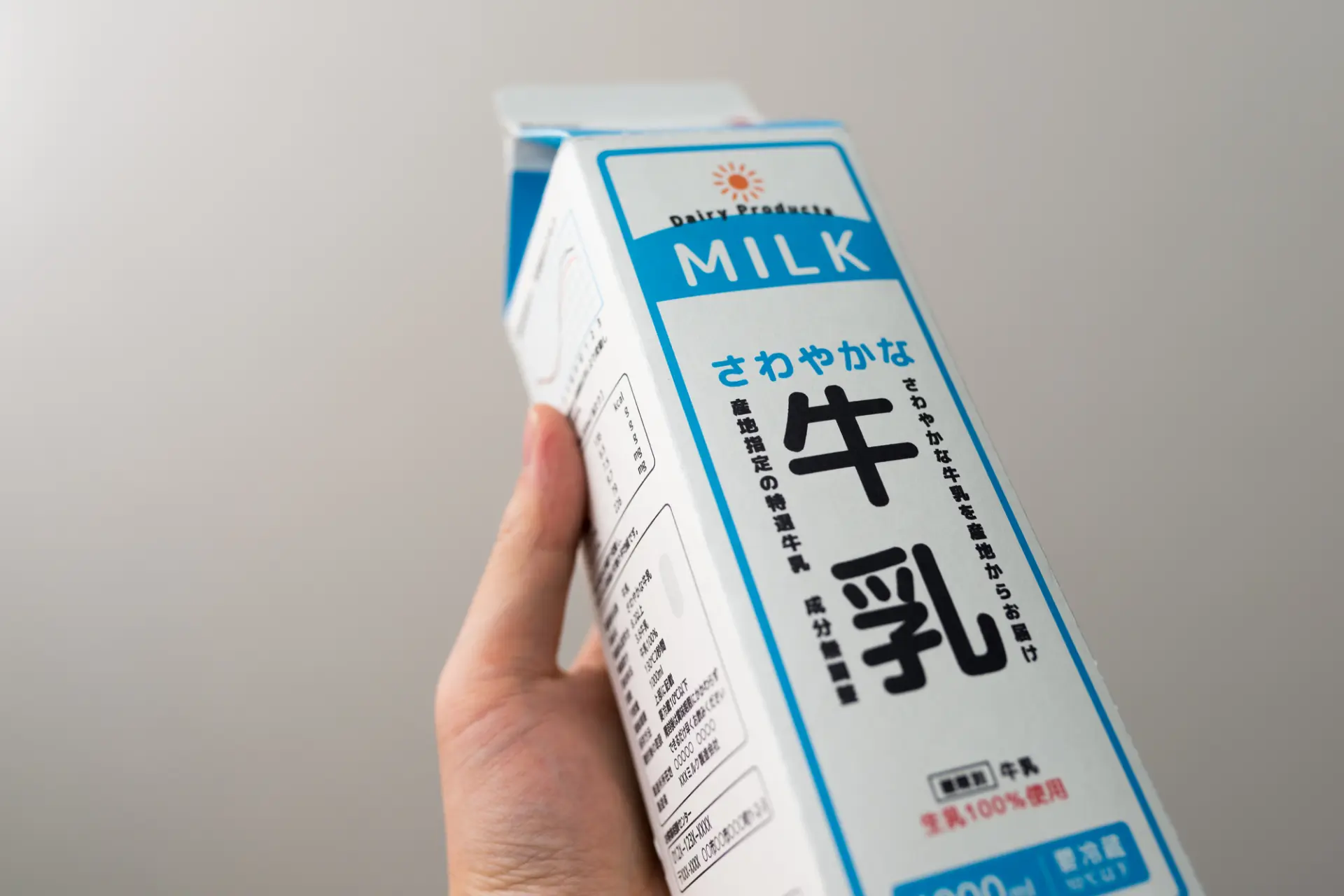
Famous National Milk Brands in Japan
Including large-scale producers, mid-sized companies, and regional products, it is said that Japan has at least 100–200 milk brands.
Among them, the most widely recognized national brands are Meiji, which began in 1917 when Meiji Seito invested in Boso Rennyu. Megmilk Snow Brand traces its origins back to the establishment of the Hokkaido Cooperative Creamery Association in 1925. Morinaga Milk Industry originated from Nippon Condensed Milk, founded in 1917. These three brands are especially well-known across the country.

3 Major Milk Products in Japan Available at Convenience Stores and Supermarkets
Here we introduce well-known milk products from the brands Meiji, Megmilk Snow Brand, and Morinaga Milk Industry. These items are widely available in convenience stores and supermarkets, making them easy to try during your stay.
Of course, each company and brand also offers many other varieties of milk, so be sure to compare different products and enjoy the subtle differences in taste.
1. Meiji Oishii Gyunyu
Meiji Oishii Gyunyu is a premium milk designed to recreate the fresh taste of milk you would drink right at the farm.
Through Meiji’s unique “Natural Taste Manufacturing Method,” unwanted odors are prevented, allowing you to enjoy the refreshing aroma, smooth richness, and delicate sweetness inherent in raw milk.
Its clean, mild aftertaste makes it easy to drink, even for children and those who usually dislike milk.
The product also comes in an original resealable carton called the “Freshness Preservation Pack.” This container reduces direct exposure to air until opening, offers excellent light-blocking properties, and helps maintain both the aroma and deliciousness of the milk.
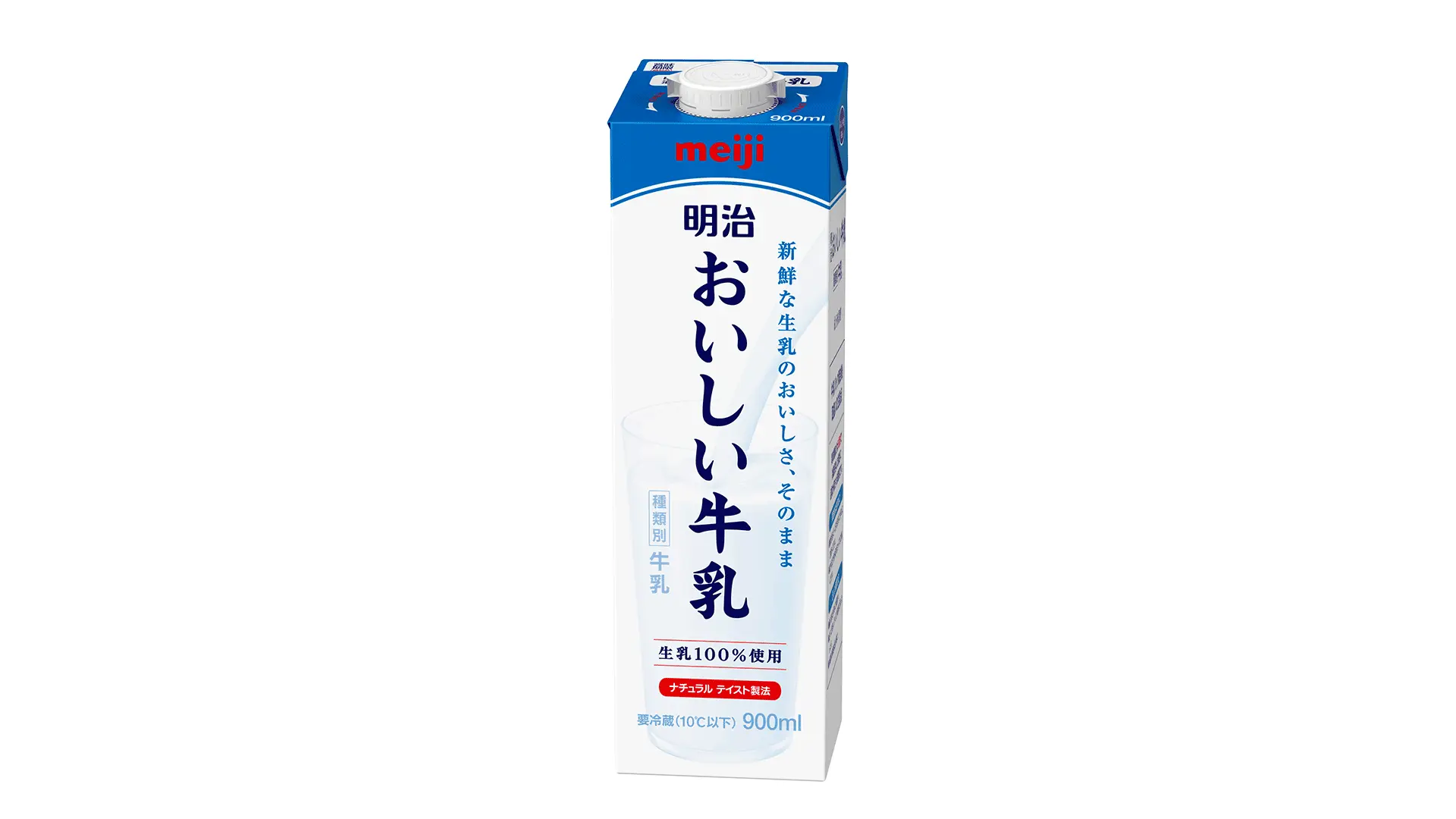
2. Megmilk Snow Brand Oishii Gyunyu
Megmilk Snow Brand Oishii Gyunyu focuses on preserving the natural flavor of raw milk. It is designed to be free of unpleasant aftertastes, recreating the desirable aroma and smooth finish of milk enjoyed fresh at the farm.
The brand uses a proprietary method called the “Low-Temperature Deaeration Process.” By removing oxygen before sterilization, it reduces flavor changes caused by heating and keeps the milk fresh.
Additionally, the red light-blocking package protects the milk from light, which can negatively affect flavor.
Thanks to these two “deliciousness technologies,” the milk delivers a dynamic taste experience from the rich aroma upon sipping to the lingering depth of flavor in the aftertaste.

3. Morinaga Oishii Gyunyu
Morinaga Oishii Gyunyu is non-adjusted milk made from 100% raw milk, delivering natural deliciousness just as it is.
The brand uses its unique FTP (Fresh Taste Process), in which steam gently envelops the raw milk. This results in a distinctive flavor that is “rich yet refreshing with a clean finish.”
Morinaga also pays special attention to the size of the fat globules in the milk, keeping them slightly larger than usual to enhance richness.
The deep blue packaging offers excellent light-blocking properties, which protect the milk from deterioration and preserve its fresh taste.
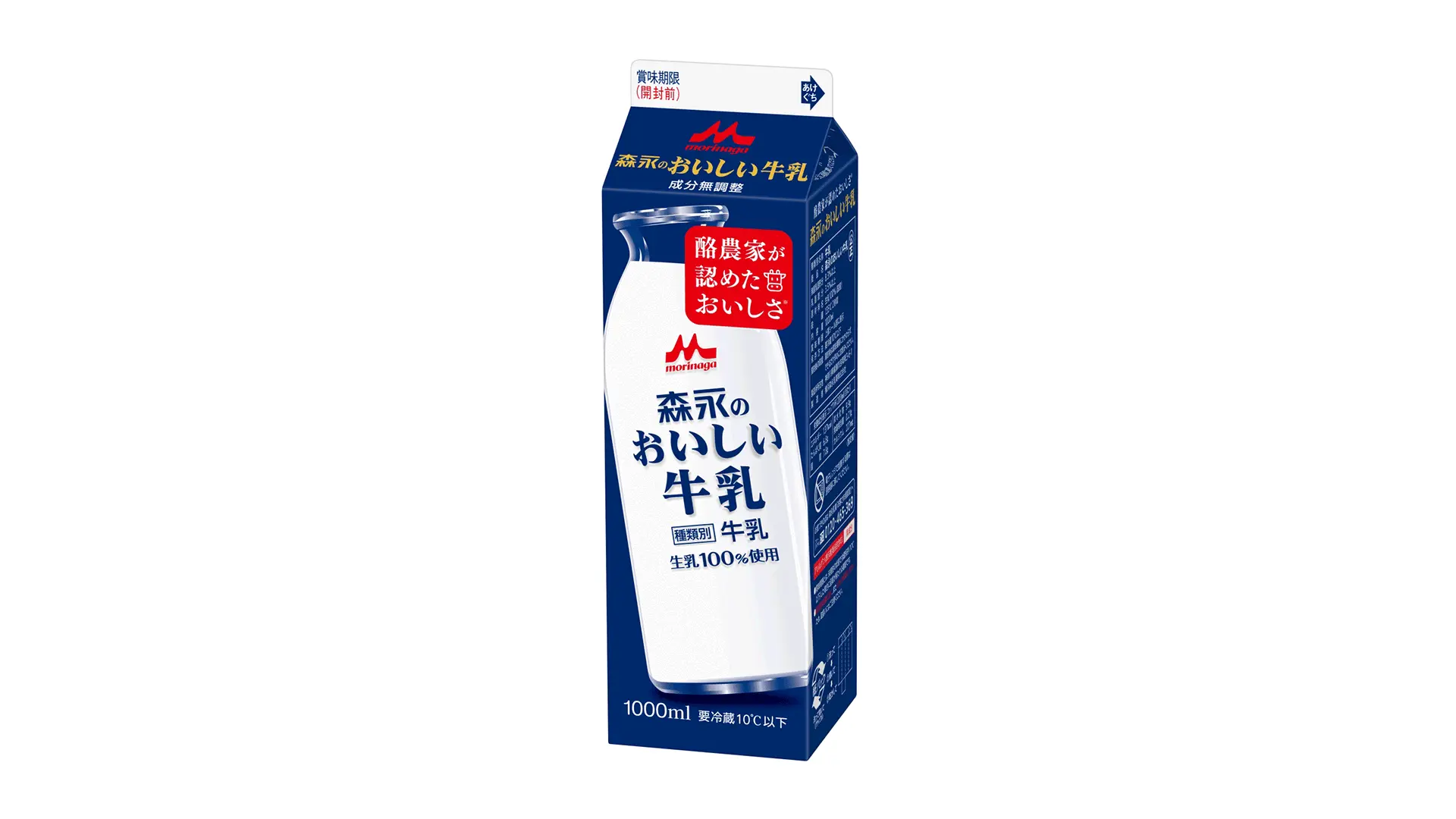
Unique Local Milk Varieties Found Across Japan
Local milk refers to milk produced in specific regions, reflecting the character of the area. Each region has its own dairy farmers and milk producers who create unique products from raw milk.
Since local milk travels shorter distances and takes less time from milking to distribution, it can often be enjoyed in an exceptionally fresh state. Distinctive production methods and care result in noticeable flavor differences and unique character.
Charming packaging that reflects the local culture and producers’ individuality is also a highlight.
Here are two notable examples of local milk.
1. Sado Milk
Sado Milk from Niigata Prefecture features a design of the crested ibis, the island’s symbolic bird, earning it the nickname Toki Pack.
It is sterilized at a lower temperature (75°C for 15 seconds) than standard milk, allowing more of the natural flavor and nutrients of raw milk to remain. The result is a light, smooth taste without off-flavors.
All dairy farms on Sado Island are certified as “Clean Milk Production Farms,” having passed strict inspections, which ensures the milk’s high quality and trustworthiness.
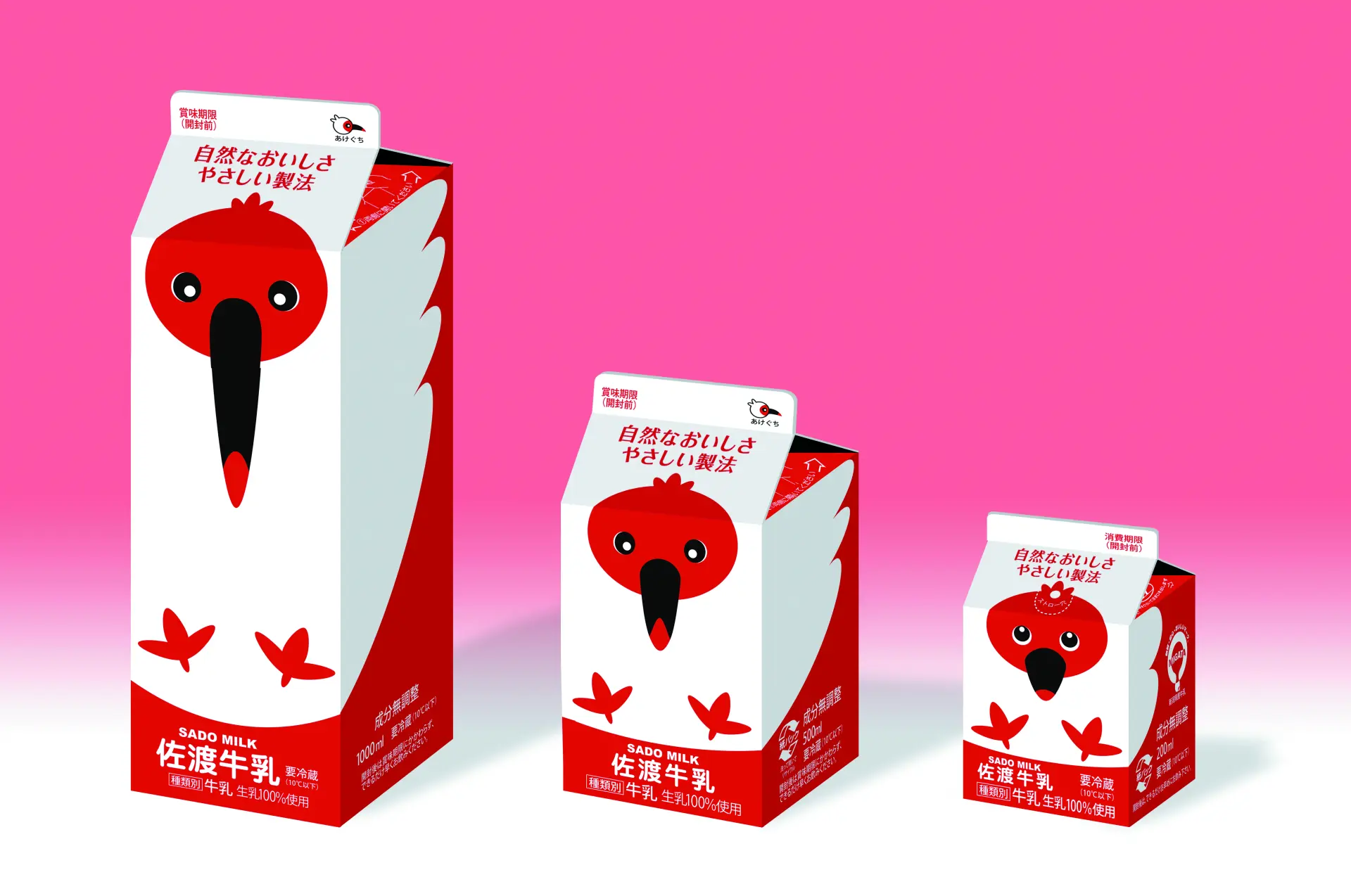
2. Yushibori
Yushibori is a local milk from Ehime Prefecture made exclusively from raw milk collected in the evening.
Evening milk has higher levels of milk fat and non-fat milk solids compared to morning milk, giving it a richer flavor and deeper taste.
Within 24 hours of milking, the milk is pasteurized and packaged at the company’s own factory, preserving a freshness close to that of freshly collected milk.
The brand takes pride in maintaining natural freshness and flavor without relying on artificial processing. For this reason, production is limited to just three carefully managed farms within the prefecture.
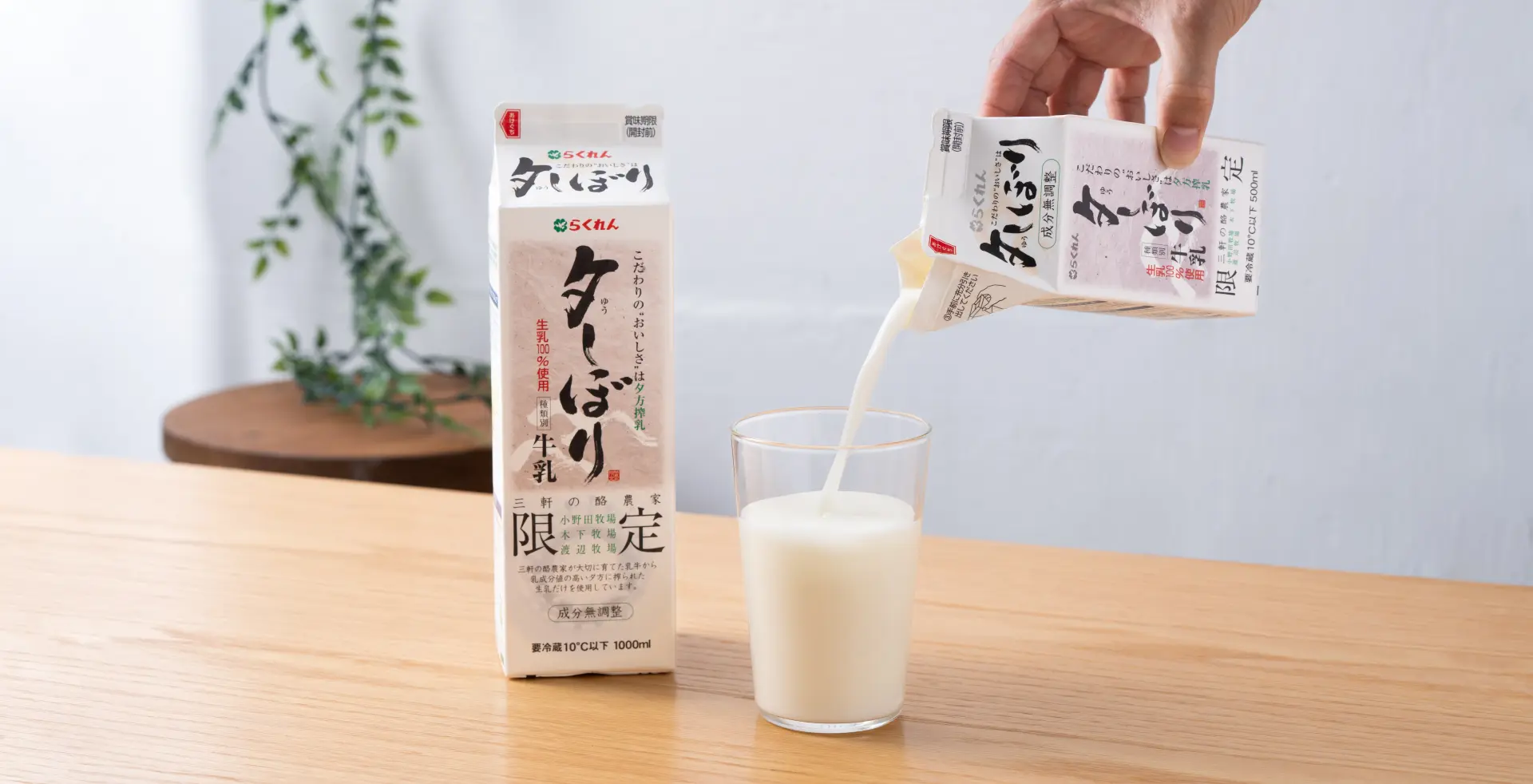
Enjoy Milk the Japanese Way
In Japan, milk is not only drunk on its own but also enjoyed in unique ways that are deeply rooted in daily life and food culture.
While it is delicious on its own, milk is also enjoyed in arrangements such as café au lait or banana smoothies, as well as paired with various foods.
Let’s look at some popular and easy ways to try milk the Japanese way.
A Glass of Milk After a Bath
Since around 1955, public bathhouses in Japan have offered milk for sale, and drinking it after a bath has become a well-loved tradition.
Downing an ice-cold bottle of milk after warming up in the bath is a blissful moment that satisfies both body and soul.
It not only quenches thirst but also quickly replenishes protein, calcium, and other nutrients.
Retro glass bottles evoke nostalgia and offer a special mood different from everyday life.
The traditional way is to drink with one hand on the hip, a style that has been passed down through generations.
If you visit a Japanese bathhouse, be sure to try milk in this traditional way.

Pairing Milk with Various Foods
Japanese people also enjoy milk alongside many different foods.
In 2023, Milkland Hokkaido (organized by the Hokuren Federation of Agricultural Cooperatives) conducted a large-scale vote to determine the foods that go best with milk: the “Gyunyu Nomitee! Milk’s Perfect Partner General Election.”
Over 100,000 votes were cast, and here are the top three winning combinations.
1. Anpan (Sweet Red Bean Buns)
The top-ranked pairing is anpan and milk—a classic combination in Japan.
The mild flavor of milk softens the richness of sweet bean paste and the chewy texture of the bread, creating a light and balanced aftertaste.
The sweetness of the bean paste is mellowed by the milk fat, and whether smooth koshian or chunky tsubuan, the red bean filling blends with the milk like cream in the mouth.
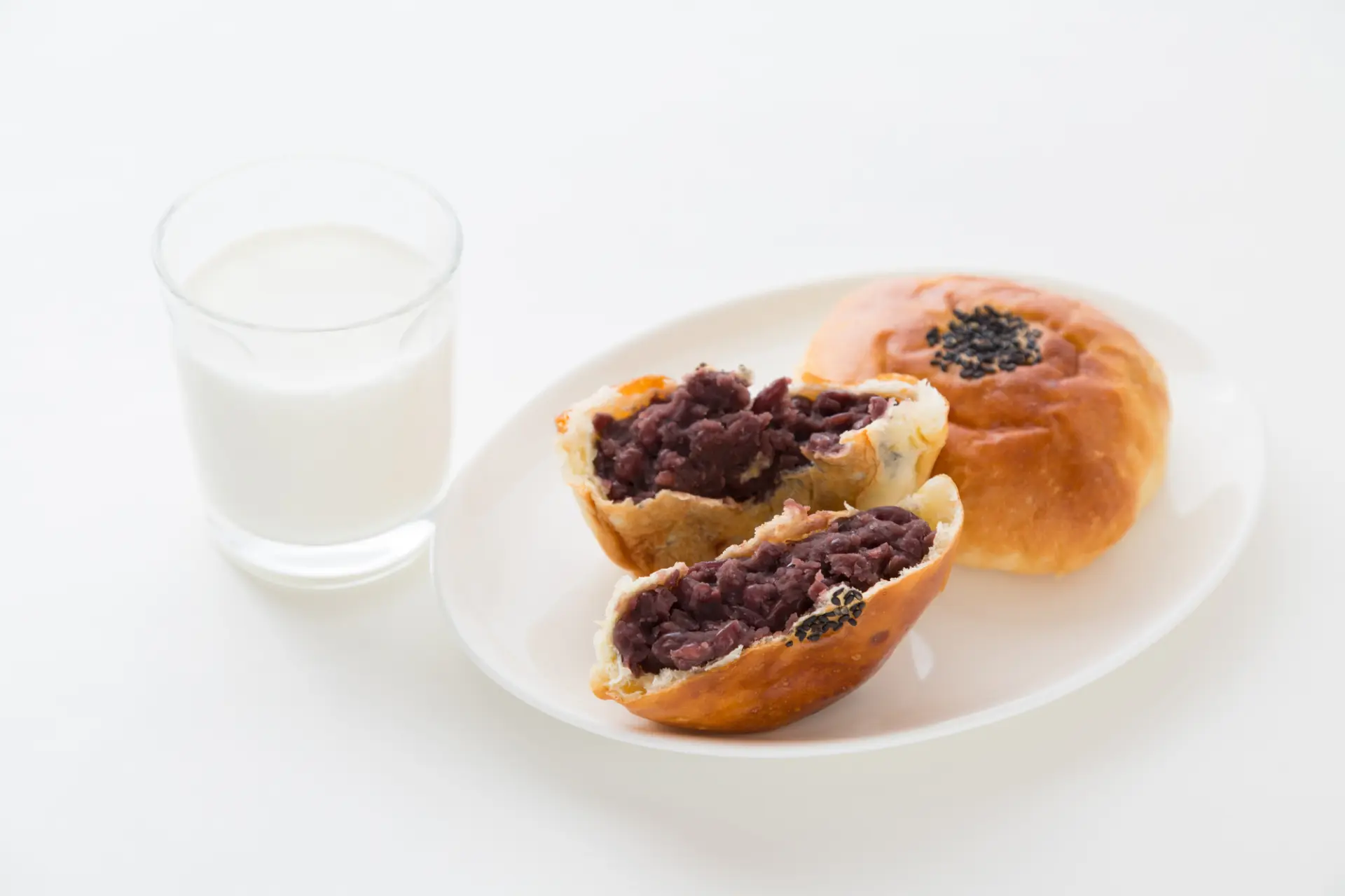
2. Cookies
The crunchy, crumbly texture of cookies pairs perfectly with milk’s mellow richness, creating a satisfying treat.
The creamy smoothness of milk enhances the flavor of cookies while also balancing out excess sweetness, leaving a pleasant finish.
With so many varieties of cookies, you can enjoy different experiences by trying multiple combinations.
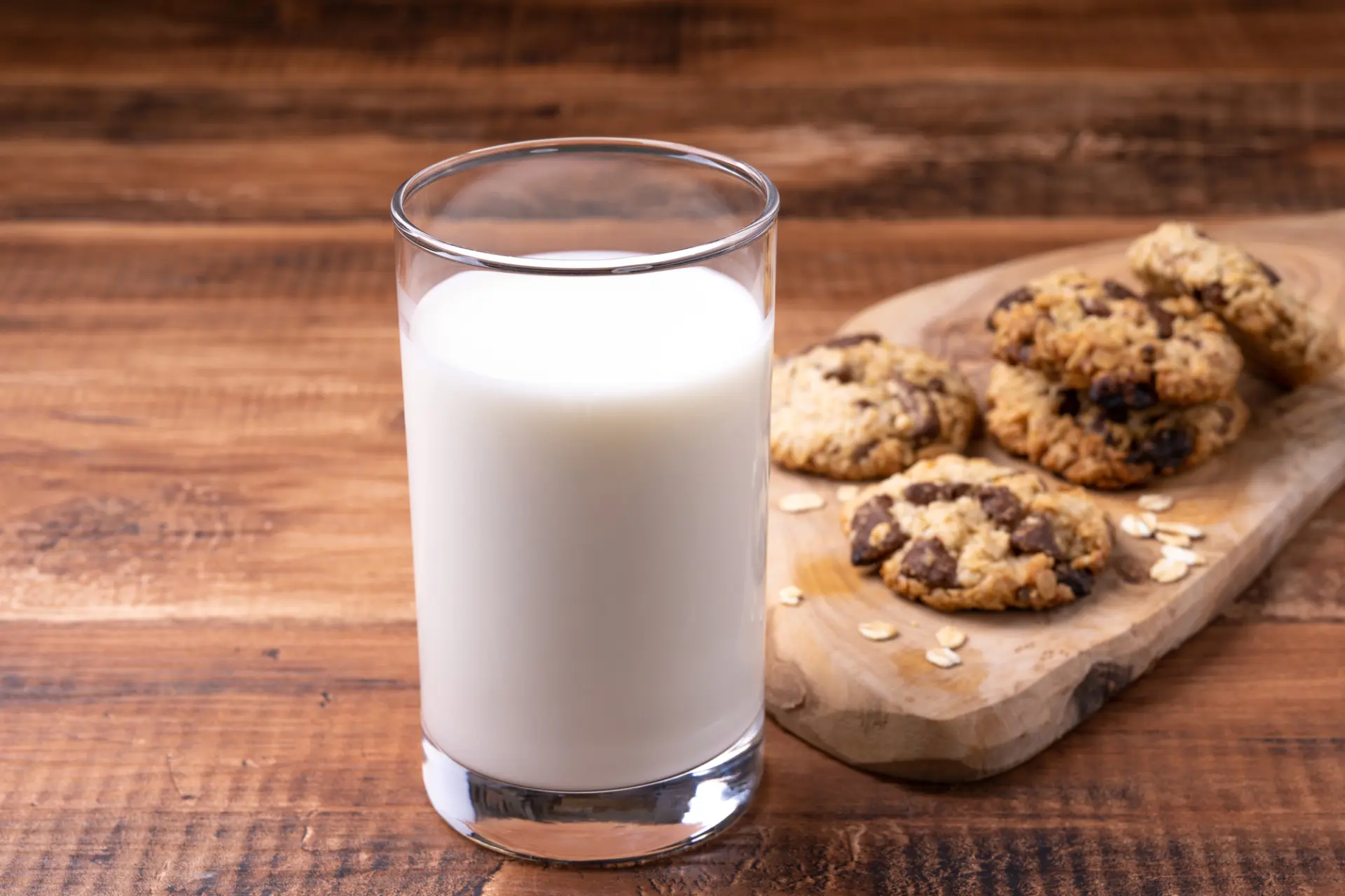
3. Doughnuts
Whether fluffy or moist, doughnuts become even more enjoyable with milk.
Milk’s natural richness softens the sweetness and oiliness of the doughnut, making every bite more delicious and deeply satisfying.
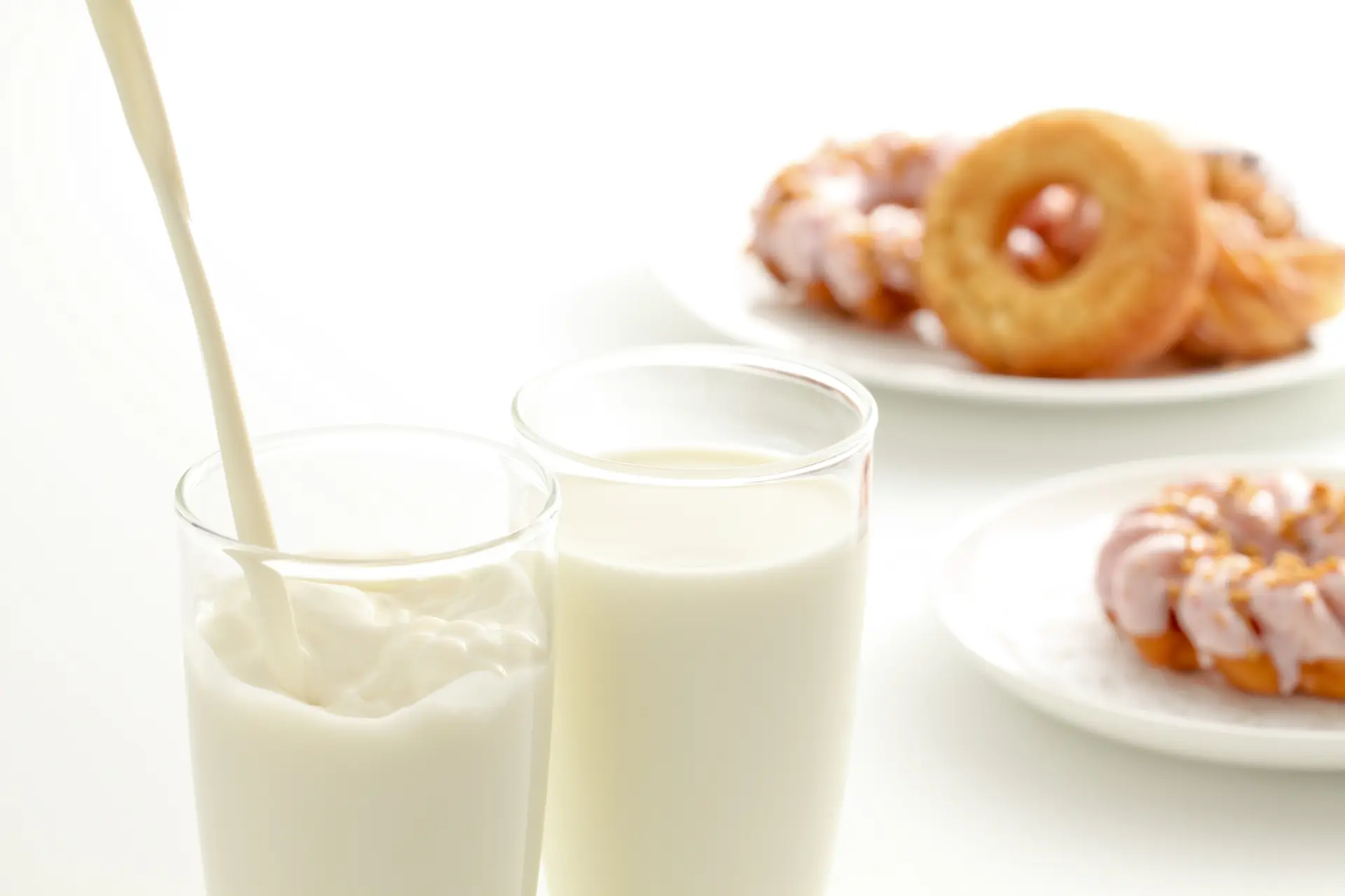
Trying Local Milk at a “Milk Stand”
If you’re visiting Tokyo, stop by a milk stand.
These are shops where you can buy bottled milk and bread or pastries, and enjoy them standing at a counter.
Milk stands offer not only nationally famous brands but also local varieties from across Japan that you won’t find in supermarkets or convenience stores.
When you buy bottled milk, the clerk will swiftly pop open the cap before handing it to you—be sure to notice their skilled technique!
Milk stands can be found on the JR Sobu Line platforms 5 and 6 at Akihabara Station, and just outside the North Exit gates at JR Okachimachi Station.
Here, you can not only taste local milk but also enjoy the unique experience of “drinking milk at a milk stand.”
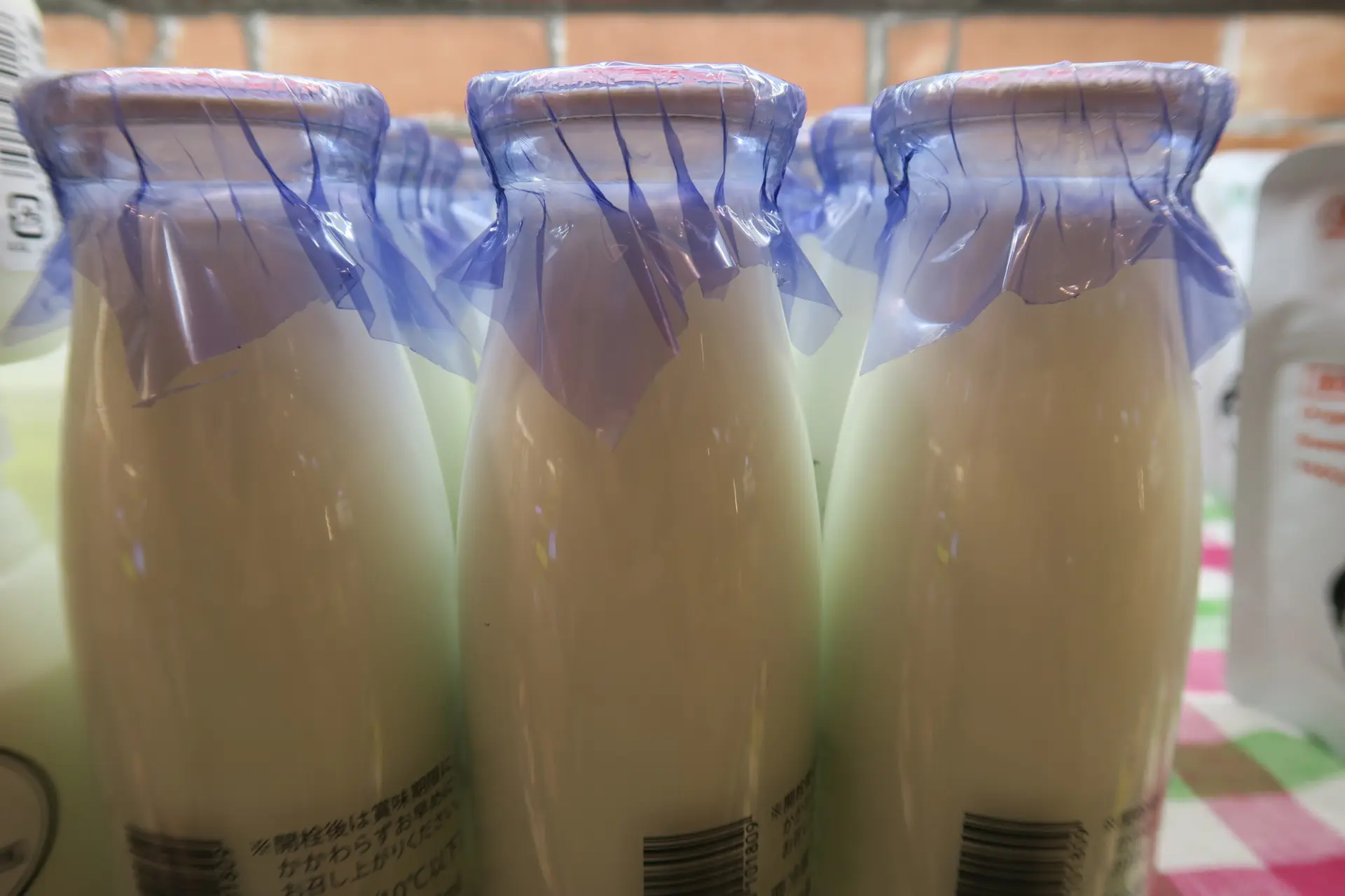
Can You Take Japanese Milk Home?
International flights have restrictions on carrying liquids.
Milk in containers over 100 ml cannot be brought into the cabin, so it must be checked in with your luggage.
In addition, some countries prohibit the import of milk purchased in Japan.
Bringing it back without declaration may result in fines, so it is important to be cautious. Regulations vary depending on the destination, so check your own country’s food safety and animal quarantine rules in advance.
Also note that chilled milk can spoil if carried at room temperature for extended periods. Especially in summer, it may go bad within just a few hours.
For the best experience, choose smaller containers that you can finish on the spot, and enjoy the milk at its freshest.

Frequently Asked Questions About Japanese Milk
Q
What is Japanese milk made from?
Japanese milk is made from 100% domestically produced raw milk. After being processed in factories to ensure freshness and safety, it is delivered to households and stores.
Q
Where can I buy Japanese milk?
It can be easily purchased at convenience stores and supermarkets nationwide.
Wrap-up
This article has introduced the characteristics of Japanese milk, how to read labels, and the unique ways Japanese people enjoy it.
Made entirely from domestic raw milk and produced under strict quality and hygiene controls, Japanese milk offers a taste that is fresh and rich, close to freshly collected milk.
Each manufacturer employs its own unique methods, resulting in distinct flavors and qualities.
When you visit Japan, be sure to try Japanese milk yourself and experience these differences firsthand.

Have you ever had milk in Japan?
Thank you for your cooperation with the survey.
